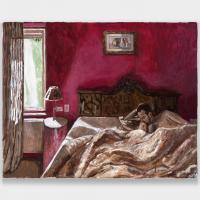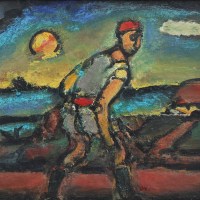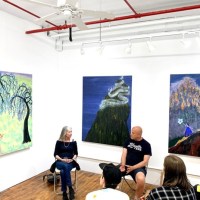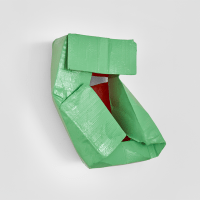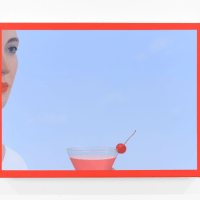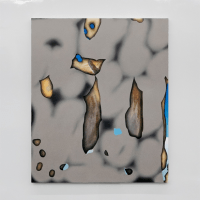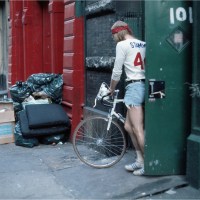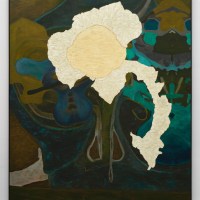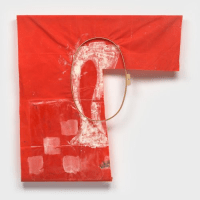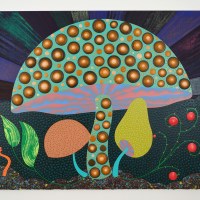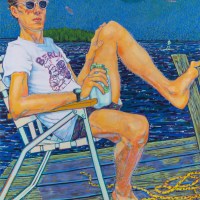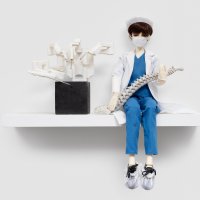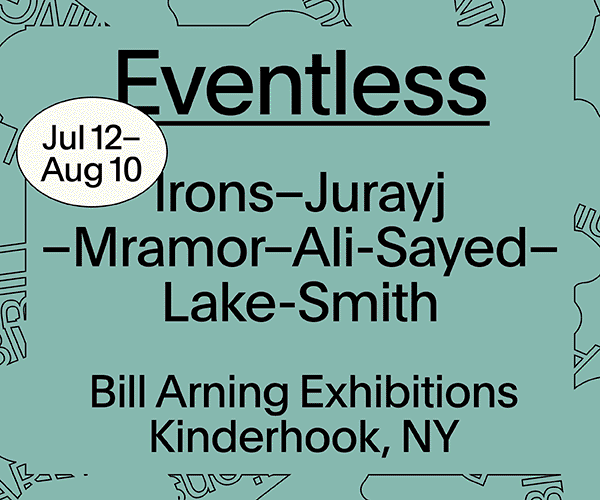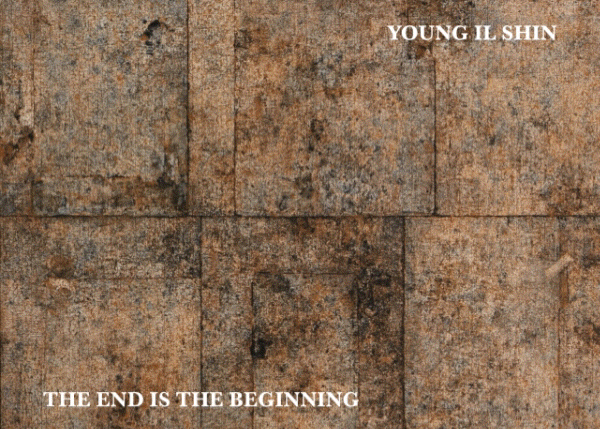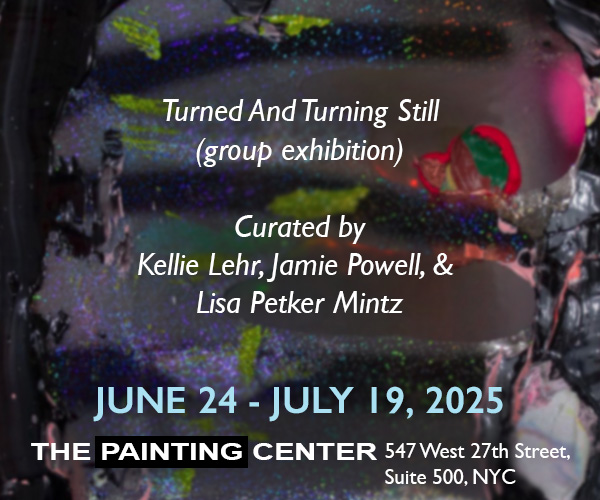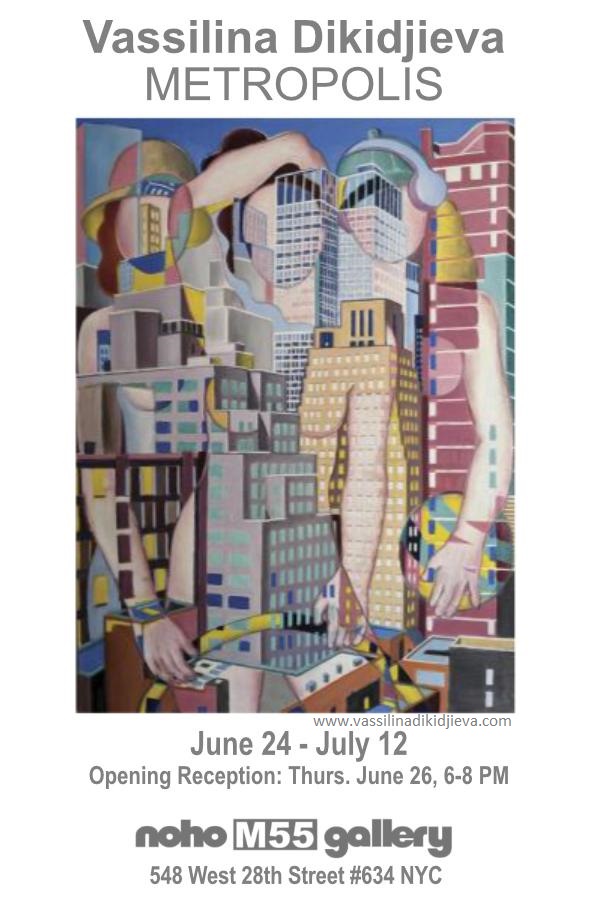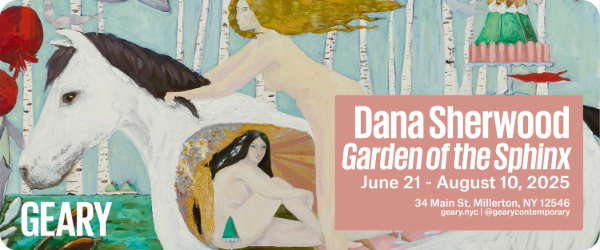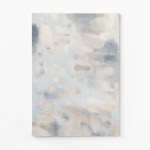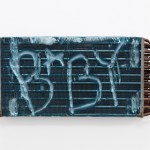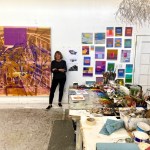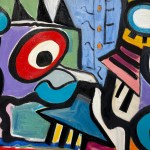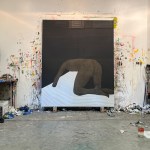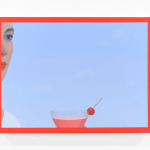Contributed by Peter Schroth / Artist Polina Barskaya – born in Ukraine, raised in Brooklyn, now living in Italy – paints intimate portraits of domestic life. In “The Good Life,” her current exhibition at Harkawik, the life in question encompasses a self-contained triangle of father, daughter, and mother, the latter being the artist and observer. It’s hard to take such a title at face value – especially, perhaps, in light of current events. Except for one painting set in a courtyard, the strictly interior world of the home – be it a private residence or a hotel room – is depicted. Each scene is rendered within a symmetrically balanced box in one-point perspective and contains a central anchoring element. These snug spaces take on a womb-like character, suggesting not only nurture or shelter but also isolation.
Solo Shows
Georges Rouault: The spirit of the visual
Contributed by John Goodrich / Georges Rouault’s star has fallen considerably since 1945, the year the curator and collector James Thrall Soby dubbed him “one of few major figures in 20th century painting.” The artist’s religiosity and stained-glass-window style are not so captivating today. …The 21 paintings now on view at Shin Gallery invite a reassessment. Organized in conjunction with Skarstedt Gallery, the exhibition offers a particularly strong selection of the Rouault’s work.
Glenn Goldberg and Mary DeVincentis
Artist Glenn Goldberg sat down with painter Mary DeVincentis during her recent solo show at Tappeto Volante Projects to explore the connections between personal experience and artistic expression. Their conversation reveals an artist whose work emerges from a lifetime of witnessing — from childhood visits to a state hospital where her mother worked as an art therapist, to her journey through loss and spiritual questioning. They discuss her latest series — paintings of solitary women who inhabit liminal spaces between memory and projection. DeVincentis discusses how her recent discovery of aphantasia — the inability to form mental images — has shaped her simplified visual vocabulary. She also draws inspiration from mythological women punished for disobedience, reimagining them as empowered by their behavior.
Lina McGinn’s whimsical gravitas
Contributed by Jonathan Stevenson / “Dear John” – Lina McGinn’s absorbing and ostensibly playful solo show of sculptures at the expansive Europa Gallery in the Two Bridges neighborhood – manifests fine technique and a conceptual sensibility deeper than it might first appear. Using fiberglass resin and polymerized gypsum to isolate and fix discarded and distressed cardboard boxes in a range of anthropomorphic poses, she achieves something quite familiar in art – the personification of inanimate objects – in a singularly inventive way.
Ridley Howard: Sky high
Contributed by Amanda Church / In his exhibition of similarly sized small-scale paintings titled “Sky,” now up at Marinaro, Ridley Howard applies his usual paint-handling panache to celestial expanses of blue. The surfaces are flawless and smooth, as are the porcelain faces of the women he depicts. The skies’ shades vary, and clouds make an occasional appearance, but there’s a pervasive sense of clarity and tranquility punctuated by partial views of treetops, cocktails, and impassive female faces. The usually stark tableaux sometimes border on the surreal. Howard’s Summer Moon, for instance, echoes Magritte’s The Banquet, minus the figure.
Michele Abramowitz’s improbable terrain
Contributed by Suzanne Joelson / I needed to write about Michele Abramowitz to understand the uncanny allure of her paintings, now on view at Kate Werble Gallery. She brings life, or something like it, to familiar conventions. Shifts in figure and ground trick the eye as it negotiates improbable terrain, that looks more like a dream than a product of twentieth-century formalism. Resemblances abound, shift, dissolve, mimic, repeat. Each painting is at once assuring and destabilizing.
Lexia Hachtmann’s surreal humanism
Contributed by Chunbum Park / The title of British-German painter Lexia Hachtmann’s solo exhibition “Waiting Room,” at YveYANG in Soho, alludes to David Lynch’s surrealist television series Twin Peaks, in which the “red room” or “waiting room” is an extradimensional space where time does not flow sequentially. The program ushered in the 1990s, when Hachtmann was born. In the moment, the nineties seemed to be the height of the American Century and still evoke nostalgia. Often overlooked is the fact that during this supposedly halcyon epoch, popular culture normalized homophobia, sexism, and racism more than it does now, even when Trumpist backsliding is taken into account. Hachtmann confronts this kind of slippage between memory and reality with subtlety and heart.
Jacqueline Gourevitch: Skying abstraction
Contributed by Jason Andrew / Jacqueline Gourevitch’s resilience stems from restraint and slow observation. From her first solo exhibition in 1958 to the current striking survey of 21 cloud paintings dating from 1965–2018 at Storage Gallery in Tribeca, the nonagenarian has shown that sustained attention to a single subject can yield infinite and dynamic variations.
Nora Sturges’ sublime dystopia
Contributed by Mark Wethli / “Edgy” is a word we commonly use to describe daring or provocative art. If anything has been a measure of artistic success in the modern era, it’s been the degree to which new art pushes the boundaries of the work that came before. The term is usually rooted in the theoretical and formal aspects of art making, but the paintings of Nora Sturges – now on view at Sarah Bouchard Gallery in Woolwich, Maine – transport us to edges of another kind…
Ted Stamm’s conceptual adventurism
Contributed by Saul Ostrow / When Ted Stamm’s career was cut short by his death at age 39 in 1984, he had already begun to attract attention in the United States and internationally. Critics including Edit deAk, Peter Frank, Robert Morgan, and Kay Larson recognized Stamm’s ability to bridge formal rigor with playful urban references. In 1975, deAk wrote in Artforum that “Stamm’s work confounds its own apparent simplicity; the shape’s tense complexity and stubborn definition of itself make it totally the artist’s like an insignia. The color is equally personal, and the painting’s presence is quietly assertive. This is certainly not the elegant nihilism of reductive solutions.” Conceptual endeavors were central to his ambition of making the border between art and everyday life porous.
Randy Wray: Fossils to flowers
Contributed by Mary Jones / In “Prehistory,” Randy Wray’s dazzlingly encyclopedic show at Karma in the East Village, some 37 sequential drawings map a vast exploration of investigative study. Like a library, Wray’s array offers far more material than one can take in over the course of an afternoon. But it is worth trying.
Rosy Keyser’s mysterious depth
Contributed by Katy Crowe / The German noun Umwelt means environment. “ultraUMWELT,” the title of Rosy Keyser’s current solo show at Parrasch Heijnen Gallery, denotes a world of dynamically connected matter. You can read a great deal into it – earth, ecosystems, subterranean root networks, and of course decay. Her work recalls biomorphic/organic abstraction, but the serendipity her process allows gives her paintings bracing and distinctive freshness.
Eric Hibit: The constant gardener
Contributed by Zach Seeger / Dennis Congdon, whose paintings depict acrid colored heaps of art garbage, once told me, “I tend to appreciate painters who work economically with what they’re given from their surroundings. You know, like my grandmother, who lived on a farm, and would whip up a meal with practically nothing in the fridge.” I too was raised to appreciate this beauty-through-austerity approach, and in light of tariffs and stagnating sales, painting with economy and valuing actual pigment may not just be in fashion but necessary. “The Big Seed,” Eric Hibit’s painting show at Morgan Lehman, is a tribute to physical pigment and the conservationist spirit, and a showcase for acute observational detail and the sheer joy of painting.
Hope Gangloff: Dashing preconceptions
Contributed by Jonathan Stevenson / At first blush, Hope Gangloff’s remarkable new paintings, on view at Susan Inglett Gallery and largely set in a notional rustic retreat, could be mistaken for blown-up greeting cards for vacationing hipsters, perhaps with a sly nod to David Hockney. Pristinely applying acrylic paint, she crafts them like illustrations, and they are unabashedly luminous. But the ecstatic vibe that characteristically radiates from that quality, though present, is winkingly deceptive. While Gangloff paints friends and actively cherishes the intimate golden moment, existential concerns burn through her work.
Sam Anderson: Feeling is structural
Contributed by Patrick Ryan Bell / Situated in Baltimore’s Old Goucher neighborhood, art hall has rapidly established itself as a pivotal space for contemporary art. Once a Hells Angels bar, the venue has undergone a thoughtful transformation that embraces its history and urban context by way of significant international artists tailored to Charm City’s audience. In a city shaped by economic precariousness, institutional neglect, and fierce grassroots creativity, art hall presents an alternative model: serious contemporary programming without the trappings of market pressure or institutional polish. Owner and director Shawn Mudd is not looking to feed or mimic New York but instead to divert its pipeline, bringing established artists to Baltimore. Now up is Sam Anderson’s solo exhibition, “There’s a Girl in My Soup,” which features a wide range of her work. It fits the gallery: rigorous, poetic, and strange.

